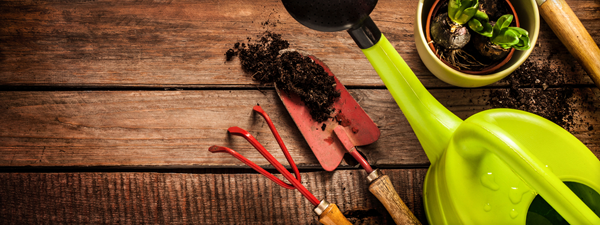With summer come blooming flowers, blossoming trees, and the promise of gardens full of fresh fruits and veggies to enjoy. Exercising your green thumb can sometimes come with a hefty price tag, though. How can you create a fantastic garden without emptying your wallet? We spoke with gardening experts and enthusiasts to get their best tips and tricks.
Save seeds
Seed packets typically come with well over 100 seeds in them. Use and save them wisely! Kim Pezza, The New Century Homesteader, says, “If you are raising open pollinated veggies (like heirlooms), save money by saving seeds for next year. Make sure that you select some of your best vegetables to save seeds from to plant next year.”
Plant sharing
Know someone who is thinning out their seedlings? You’re in luck! “If you know someone who has planted a garden and is now thinning out their seedlings, those discarded seedlings, as long as the little roots are still attached, will transplant,” Pezza explains.
Look for low-cost plants to get started
Bryan Kratz, Naturalawn Natural Alternative products suggests getting started with low-cost plants. Lettuce, bell peppers, garlic, winter squash, tomatoes and broccoli are all great low-cost vegetables for your home garden. If you’re more interested in growing flowers, then gerbera daisies, salvia, sweet potato vines and daylilies are all low-cost options.
Choose perennials instead of annuals
Lee Ann Torrans, Texas Gardening, recommends picking perennials over annuals. “Perennials are often a much better bargain than annuals. Hostas are beautiful in pots and come back year after year, as do mums. Annuals generally require more water and generally last less than a full season.”
Use what you have to get your seeds started
Instead of investing in a bunch of smaller starter pots, use what you have to get your seeds started. “You can start by growing seeds in an egg carton or make your own newspaper seed containers,” says Roger Marshall, Editor, Home Greenhouse magazine. “I start all my plants from seed, use milk cartons and juice boxes as containers for transplanted seedlings until they grow large enough to transplant into the ground or into containers.”
Jane Santucci, Environmental Project Manager — wvleaflet.com, adds, “In regards to apartments, if you have a balcony or at the very minimum a window then you have enough space to grow your own food. I have used Greek yogurt cups starting to sprout seed leaves in my window, which I will later transfer to a pot.”
Add some flowers to your veggies
Toni Sicola, cultivatedwellbeing.com, recommends taking advantage of pollination by adding some flowers to the mix. “If you have room, plant some flowers — attracting pollinators will help your plants along (especially if you want to grow fruit). Plus, it’s fun to see hummingbirds, butterflies, and bees in the garden.”
Use natural “pesticides”
Pesticides can cost money and have negative effects on the (good) insect population living around your plants. Embracing more natural pesticides can help save you money and make your green thumb a little greener. “Ladybugs eat aphids,” Sicola reminds gardeners. “You can purchase live ladybugs at most nurseries. Just make sure to wait until it’s dark to release them into your garden, otherwise you will have wasted your time and they’ll all fly away.” You can also plant flowers that deter insects, like marigolds, in and around your prize veggies.
Look for discarded pots
Don’t invest in new pots unless you need to. Instead, keep an eye out for discarded pots. “Many times old pots can be found free along the road or inexpensively at yard sales,” Pezza points out. “Just disinfect before using with a bleach and water solution and let dry.” Kratz adds that Craigslist and similar sites can provide opportunities to pick up gardening equipment at a fraction of the retail price.






